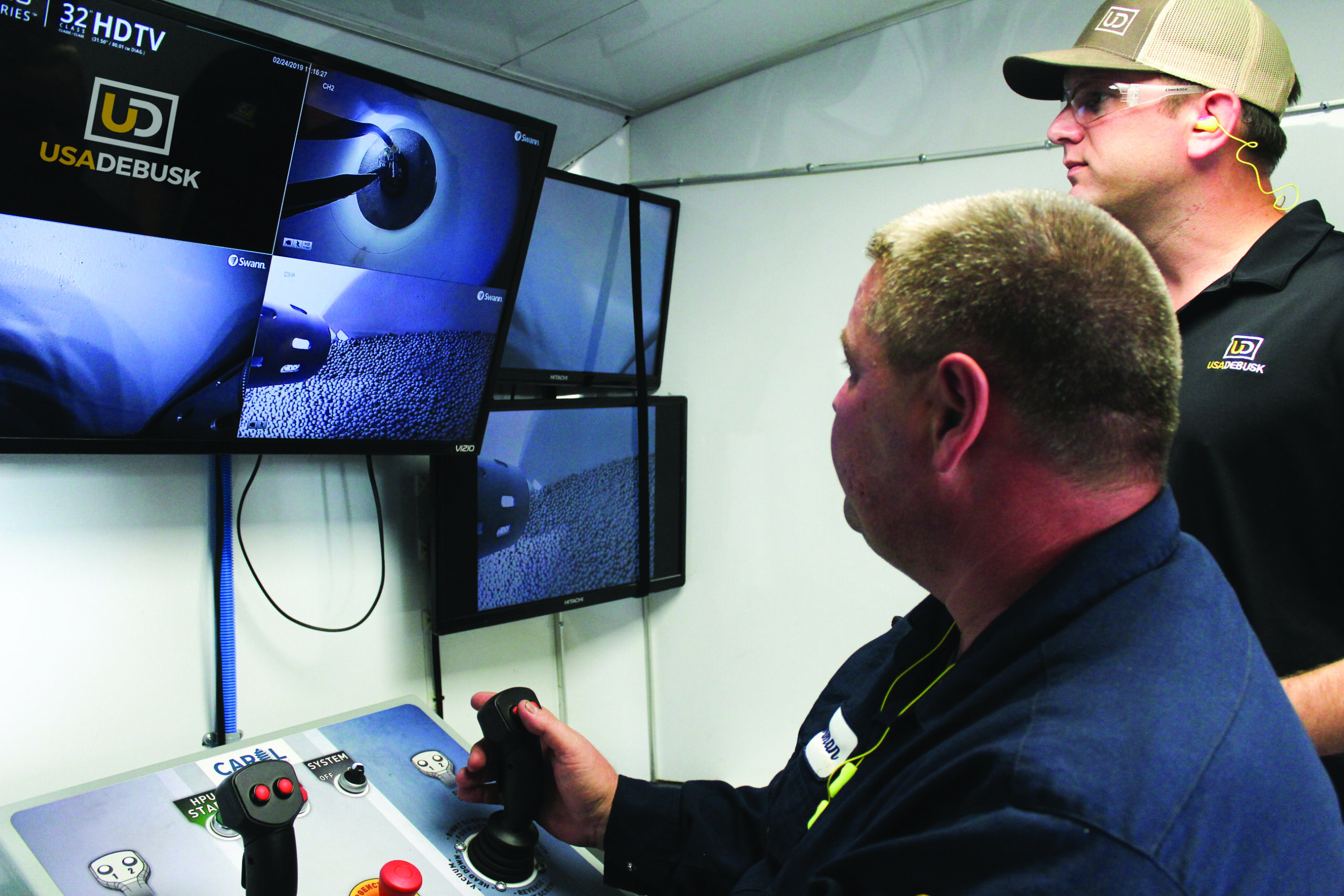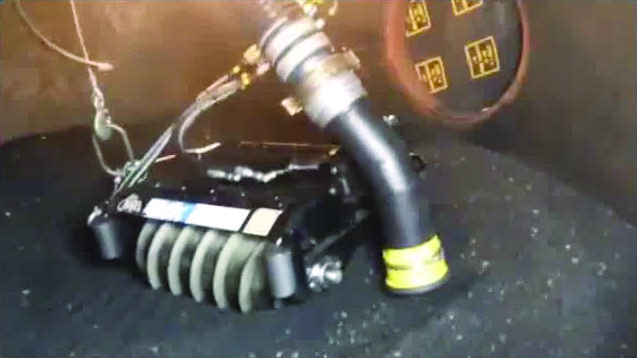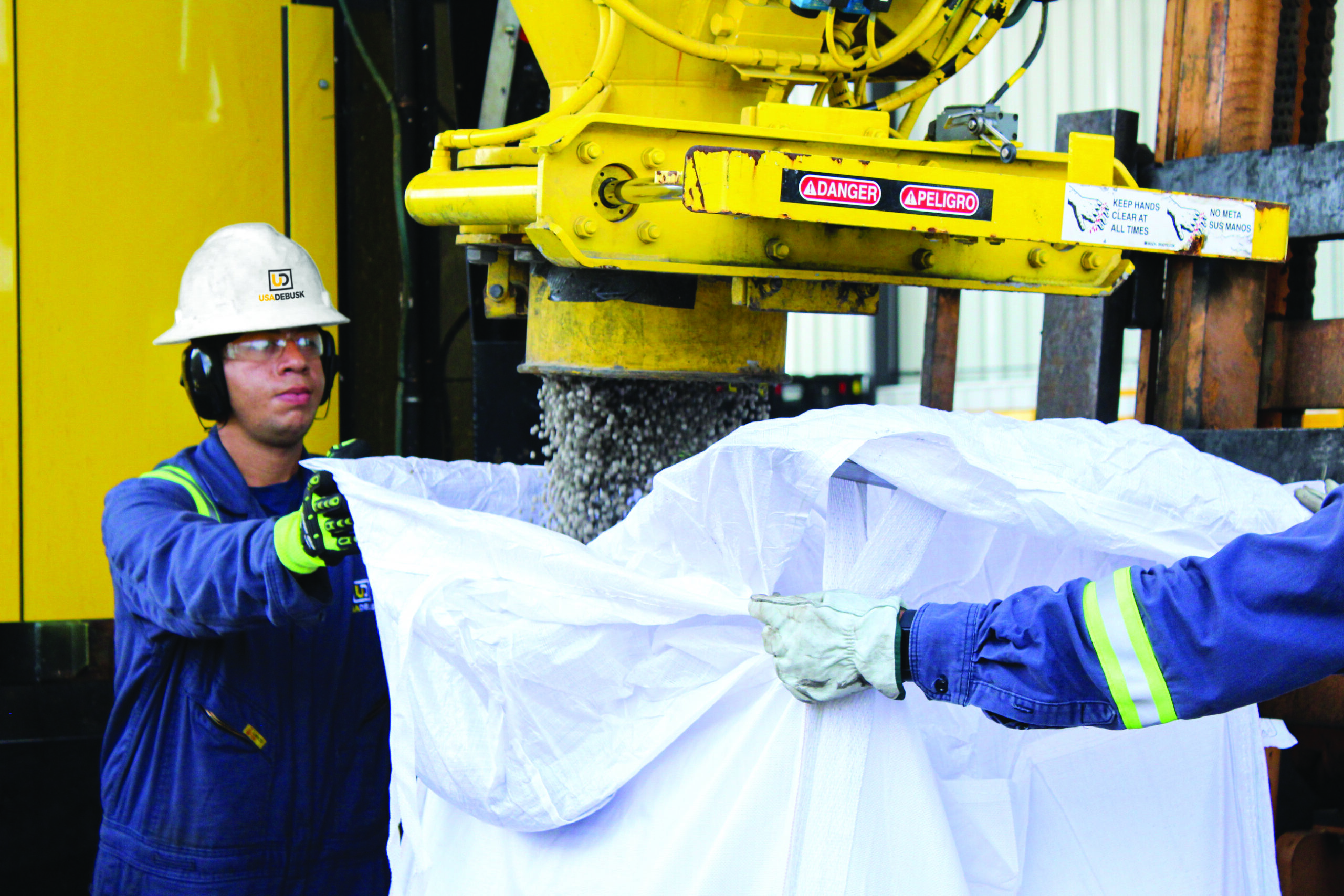Innovative CAROL System Minimizes Manned Entry
The system dramatically improves safety by reducing or eliminating the need for confined-space entry during catalyst changeouts.

Enhance Productivity
Capable of working at a constant rate around the clock
Avoids the downtime of shift changes, employee rotation and rest breaks
In some applications, it can be used simultaneously during gravity dumps or may be used while it is still at elevated temperatures to decrease catalyst removal time and standby
How It Operates
The robot is remotely controlled by a technician from the safety of a support trailer. Cameras and lights aboard the vehicle and mounted at the manway allow constant visual surveillance of operations.
The CAROL robot is an amphirol (screw-propelled vehicle) designed to sit on top of the catalyst as it vacuums material. A lightweight aluminum frame and large-diameter screws provide a buoyancy effect that helps keep the robot atop a full range of media encountered in catalyst unloading (densities from 40 – 80 lb/ft3 and particle sizes from 0 – 1 inch).
Twin worm gear propulsion powered by direct-drive hydraulic motors allows the robot to traverse media beds of various materials. The vacuum head is connected to the robot by a hydraulic cylinder and can be raised and lowered remotely for optimum efficiency. Implements mounted on the nozzle head allow CAROL to break up lightly fused materials such as a dense loaded catalyst bed or crusty deposits at interface layers.
All in-vessel electrical equipment is rated for use in Zone 1 and Class 1 Division 2 hazardous areas (ATEX, IEC Ex and AEx certification on the camera system).

CAROL Robotic Catalyst Removal

Cost Neutral
However, the safety, speed and productivity advantages yield substantially greater value for you.


